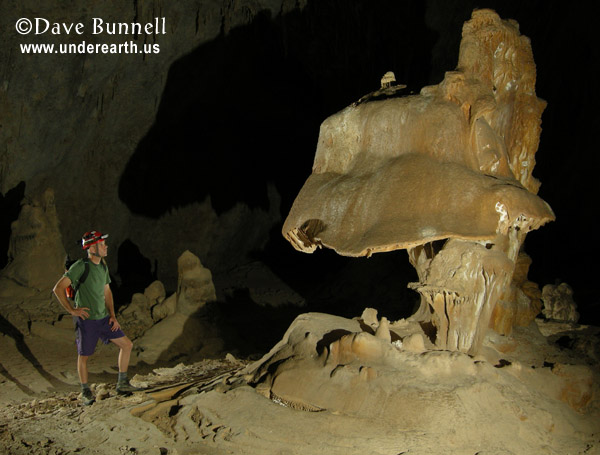
|
Canopies are a subtype of Flowstone that overhangs from a cave wall or speleothem such as a column or stalagmite. A Bell Canopy, with its classic mushroom-like shape, is due to variations in the flowing water that forms the flowstone. In low flow, the water deposits near the top and doesn't reach the bottom of the bell, higher flows reach the edge of the bell and deposit calcite there. The top two photos show bell canopies in the Guadalupe Mountains of New Mexico. See also Baldacchino Canopies, for a canopy that may look similar but forms rather differently. The bottom photo shows another type of canopy known as a clastic canopy. It occurs when flowstone flows over material such as rock or clay, that is washed away later, leaving a relatively flat surface exposed underneath. You can actually see stream cobbles embedded on the ceiling over the cavers head. The stalactites on the edge surely formed after the former floor had washed away. |
![]()



![]()
| Back to: | |
 |
Created: June 19, 1995 Last Updated: November 24, 1998 Author: Dave Bunnell |